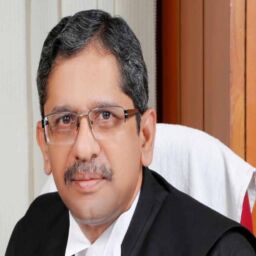INTRODUCTION
[1]Independence of the is the backbone of every country and it means that it should be kept aloof from any form of external or internal forces of politics as well as from the other organs of democracy i.e., the executive and legislature. It thus calls for another doctrine that is the doctrine of “separation of powers”. The [2], the Ram Jawaya v. the State of Punjab[3], the Ram Krishna Dalmia v Justice Tendolkar[4] and the Jayanti Lal Amrit Lal v S. M. Ram[5], all recognized the separation of powers and made it a core principle of the Indian Constitution. The reason behind that there is no explicit mention of separation of powers in the constitution is because of Dr B.R. Ambedkar because he was of the view that if India follows a strict separation like that of the USA, then it can create hindrances in the smooth functioning of the Government. He said that “the doctrine of separation of powers no doubt shall be a feature of the Constitution but it should not be mentioned explicitly and rather should remain evident from the other provisions itself”[6]. For the independence of the Judiciary to thrive peacefully in a country it is very important that the principles of separation of powers must be held high in spirits. The main objective behind the “independence” of the Judiciary is to the Judge from any kind of biases, prejudices, religious , etc. so that the Judge can pass judgment to provide proper justice and resonate with the principles of natural justice.
THE NJAC vs. THE COLLEGIUM SYSTEM
Though the “3rd Judges Case” dealt majorly with the appointment of Supreme Court Judges there still remained a void that was still to be answered and the necessity for a distinct Commission came into play. The idea of setting up a judicial commission was reported back in the year 1987. The report suggested that the commission should comprise of the CJI as Chairman, the Law Minister, Attorney General, CJ of HCs. The formation of the commission was also suggested by the “National Commission for reviewing the working of the Constitution”, in 2002. But again, it was turned down. The NJAC became part of the constitution through the 99th Constitutional Amendment. The Amendment brought changes to Articles 124AThe NJAC was supposed to be consisting-
“(1) The CJI as its ex officio chairman
(2) Two senior-most judges of the SC
(3) The Union Minister of Law and Justice
(4) Any two eminent persons who shall be nominated by the committee which shall consist of the PM, the CJI, the leader of the opposition, or the Lok Sabha, or in case a leader of the is not there then the leader of the single largest opposition party in the house of people of the Lok Sabha.”
But on 16th October 2015 in the case of Supreme Court Advocates-on-Records Assn. v. UOI[10], the Apex court declared the 99th Amendment, hence the NJAC as unconstitutional.
Problems with the Collegium System
The collegium sprouted from the 2nd Judges case. The formation of the collegium has been criticized by eminent Jand by the Judges of the Supreme Court themselves. H.M. Seervai said that “never has a majority judgment of the Supreme Court reached a lower level of judicial incompetence” while criticizing the 2nd Judges case. J. Krishna Iyer thrashed the judgment as “an egregious fraud on the Constitution”. “Fools rush in where angels fear to tread.”, was the title of the essay in which Lord Cooke severely criticized the judgment.
One of the major drawbacks of the collegium system is that is far more important to the Seniority rather than on Merit. The collegium is unable to stand on its own grounds and has also shown its diminishing sanctity when the appointment of other persons to SC was reversed without providing any clarification or justification. In a democracy like India the collegium, whose responsibility is to appoint judges to the Supreme Court, the very protector of our Constitution, is out of “checks and balances”. There still remains a smog over the criteria of choosing the Judges. Debates have also a that the nephews, sons, or daughters of ex-judges or prominent jurists are favoured over others. Unfortunately, while discarding the NJAC as “unconstitutional”, the SC did not suggest any changes to balance the new NJAC with the collegium system. The SC blatantly dismissed the 99th constitutional amendment. As a result, there was no reform to the existing opaque collegium system. Contrastingly, the SC itself stated that the present collegium system needs reforms while deciding the case. Other lacunas of the collegium system include- “the absence of selection criteria, the arbitrary reversal of decisions already taken, the selective publication of records of meetings — all of these points towards the fact that the Collegium is not only opaque but also arbitrary.”, as reported by The Indian Express.
CONCLUSION
While addressing the inaugural session of the Supreme Court of India on 26th January 1950, Jawaharlal Nehru said that the appointment of Judges is of the “highest integrity” and advised them to “stand up against the executive government and whoever might come in their way”. The debatable Collegium of Judges needs immediate reforms since the appointment of judges isn’t something to be meddled with. These words of Nehru must be engraved in our hearts and we must remember the motto of the Supreme Court- “यतोधर्मस्ततोजयः”, which means that where there is “dharma” or righteousness there is a success.
Author(s) Name: Debamoy Mukherjee (XIM University, Bhubaneswar)
References:
[1] AZQUOTES, <https://www.azquotes.com/author/9277-James_Madison/tag/separation-of-powers> accessed 24 January 2022
[2]Kesavananda Bharati v. State of Kerala, AIR 1973 SC 1462.
[3]Ram Jawaya v. State of Punjab , AIR 1955 SC 549.
[4]Ram Krishna Dalmia v. Justice Tendolkar , 1958 AIR 538.
[5]Jayanti Lal Amrit Lal v. S. M. Ram, 1964 AIR 648.
[6]Constituent Assembly Debates Book No.2, Vol. No. VII Second Print 1989, p.967, 968
[7]The Constitution of India, 1950
[8]The Constitution of India, 1950
[9]The Constitution of India, 1950
[10]Supreme Court Advocates-on-Records Assn. v. Union of India , Writ Petition Civil No. 13 of 2015.
[11]Ajit Prakash Shah, ‘It’s time for the Collegium system to go’ (The Indian Express, January 18, 2019) <https://indianexpress.com/article/opinion/columns/supreme-court-collegium-justice-maheshwari-khanna-5543778/> accessed 18 January 2022
















